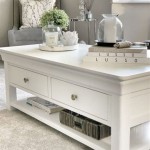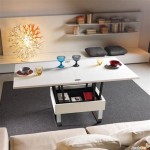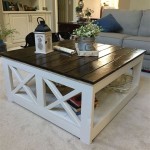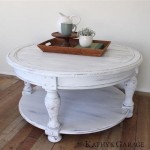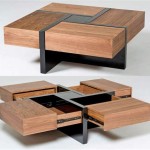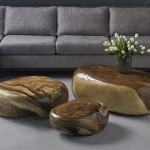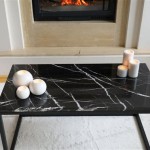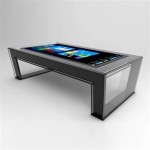Types of Table Setup in the Restaurant Industry
The layout and arrangement of tables within a restaurant significantly impact the dining experience, operational efficiency, and overall ambiance. Understanding the various table setup styles and their appropriate applications allows restaurant owners and managers to optimize space, enhance customer comfort, and maximize profitability. Choosing the right setup depends on various factors, including the restaurant's concept, the type of cuisine served, the target demographic, and the available floor space. Different occasions and events may also call for specific arrangements to accommodate varying group sizes and dining styles.
1. Fine Dining Setup
Fine dining establishments typically employ formal table settings characterized by high-quality linens, elegant tableware, and meticulous placement of cutlery. This setup prioritizes creating a sophisticated and refined atmosphere. Tables are often spaced generously to provide guests with a sense of privacy and exclusivity. Circular tables are commonly used for smaller groups, while larger rectangular or oval tables accommodate larger parties. The focus is on providing a luxurious and intimate dining experience.
Within the fine dining category, variations may exist based on the specific style of service. For instance, restaurants practicing French service may require additional space for gueridon tables used for tableside food preparation. Similarly, establishments offering a tasting menu experience might opt for a more minimalist table setup to allow the focus to remain on the sequence of dishes.
2. Casual Dining Setup
Casual dining restaurants prioritize practicality and efficiency while maintaining a welcoming atmosphere. Table arrangements are generally more flexible and adaptable to accommodate different group sizes and dining preferences. A mix of table shapes and sizes, including square, rectangular, and round tables, may be used. Table spacing is often closer than in fine dining, allowing for higher seating capacity. Linens may be simpler or absent altogether, and the emphasis is on creating a comfortable and relaxed dining environment.
The specific table setup in a casual dining setting can vary widely depending on the restaurant’s theme and target market. Family-style restaurants might favor larger tables to accommodate groups, while cafes might utilize smaller, more intimate tables. Fast-casual establishments, on the other hand, may employ a combination of individual tables and communal seating arrangements.
3. Banquet Setup
Banquet setups are designed to accommodate large groups of people for special events, conferences, or weddings. These setups typically involve long, rectangular tables arranged in rows or a U-shape to maximize seating capacity within a designated space. Round tables are also frequently used, particularly for more formal banquets. Depending on the nature of the event, banquet setups may incorporate additional elements such as a head table, a dance floor, or a stage.
Flexibility is key in banquet setups. The arrangement must be adaptable to accommodate different group sizes, seating preferences, and event requirements. Consideration should be given to factors such as accessibility, traffic flow, and the placement of audiovisual equipment. The overall goal is to create a functional and aesthetically pleasing space that meets the specific needs of the event.
4. Bistro Setup
Bistro setups are characterized by a more intimate and informal atmosphere. Small, closely spaced tables are a defining feature, often arranged along sidewalks or within compact dining areas. Bistro setups are common in cafes, pubs, and smaller restaurants. They create a sense of community and encourage interaction between diners. The focus is on providing a casual and convivial dining experience.
Bistro table setups often incorporate outdoor seating, utilizing foldable tables and chairs to maximize flexibility and space utilization. The use of outdoor heaters or umbrellas can extend the use of these spaces into different weather conditions. The overall aesthetic aims to create a charming and approachable atmosphere that encourages lingering and conversation.
5. Bar Setup
Bar setups are designed to facilitate socializing and casual dining. High-top tables and bar stools are standard features, encouraging interaction between guests and bartenders. This setup is commonly found in bars, pubs, and restaurants with dedicated bar areas. Bar setups often include televisions for entertainment and may feature live music or other forms of entertainment. The focus is on creating a lively and engaging social environment.
Bar setups can also be integrated into other dining areas, offering guests a choice between traditional table seating and a more casual bar experience. This allows restaurants to cater to a wider range of customer preferences and dining styles. The design and layout of the bar area should consider factors such as traffic flow, accessibility, and the placement of essential equipment like refrigerators and taps.
6. Cafeteria Setup
Cafeteria setups prioritize efficiency and high-volume service. These setups typically feature long, parallel rows of tables with chairs or benches on either side. This arrangement allows for quick and easy access to food service areas and maximizes seating capacity in a limited space. Cafeteria setups are common in institutional settings such as schools, hospitals, and corporate cafeterias.
The focus in cafeteria setups is on practicality and functionality. Materials used for tables and chairs are often durable and easy to clean. Traffic flow is carefully planned to minimize congestion and ensure smooth movement of diners. The overall design aims to provide a functional and efficient dining experience for large numbers of people.

Table Setting Diagrams Formal Fine Casual More Set Ups

Table Setting Diagrams Formal Fine Casual More Set Ups

Table Setting Diagrams Formal Fine Casual More Set Ups

Proper Table Setting 101 Everything You Need To Know Emily Post

Proper Table Setting 101 Everything You Need To Know Emily Post

Table Setting Diagrams Formal Fine Casual More Set Ups

Table Service Styles Placements And Functions Polo Tweed

How To Set A Table Guide Basic Casual Formal Setting

Proper Table Setting 101 Everything You Need To Know Emily Post

Table Setting Diagrams Formal Fine Casual More Set Ups
Related Posts

